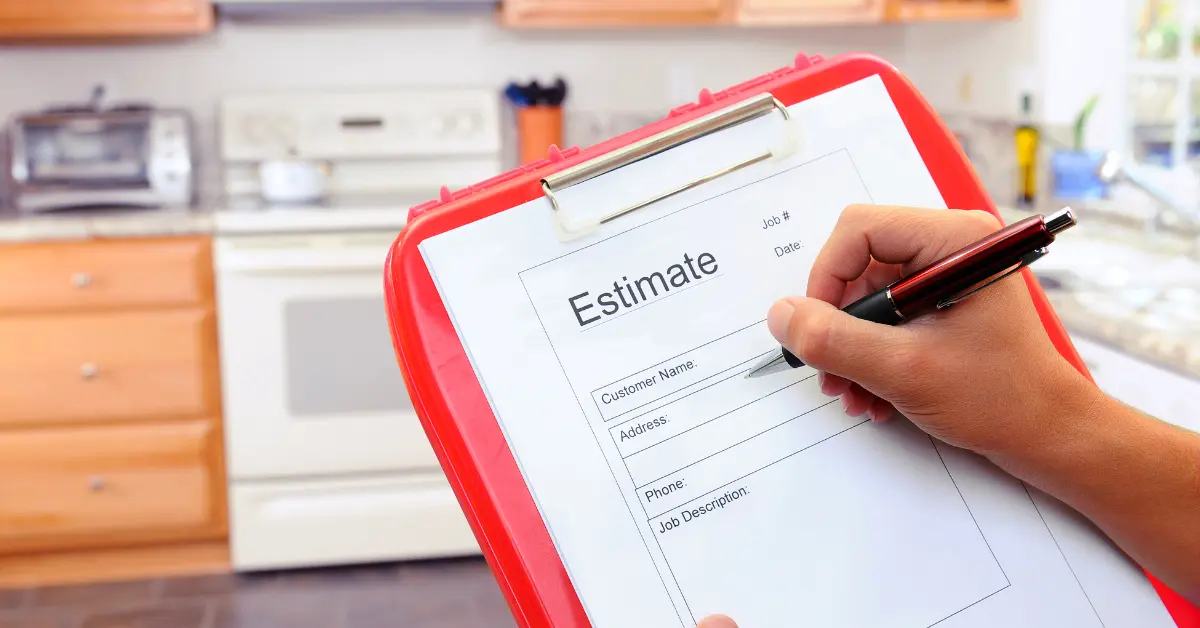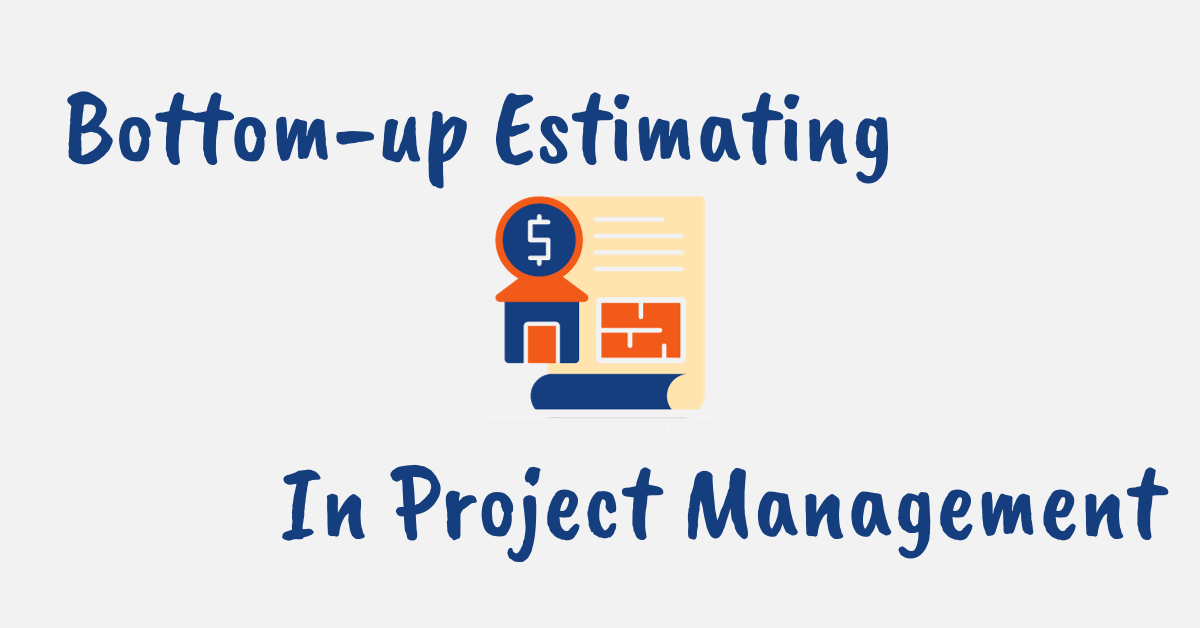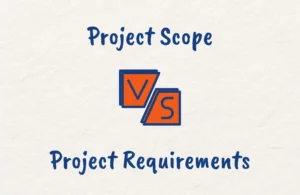When starting a new project, having an accurate cost and timeline estimate is critical for effective planning and resource allocation.
However, coming up with accurate estimates can be challenging, especially for unique projects that have little or no historical data to leverage. This is where bottom-up estimating comes in handy.
Bottom-up estimating is a valuable technique in project management that can help you create realistic and reliable estimates by breaking down the project into smaller, detailed components.
It works by aggregating estimates from the lowest level of the Work Breakdown Structure (WBS) to arrive at an overall forecast.
In this article, you will learn all about bottom-up estimating in project management, and how to implement it to produce accurate estimates and ensure your next project’s success.
What is Bottom-Up Estimating in Project Management?
Bottom-up estimating is an estimating technique in project management where you decompose the project into smaller, detailed components to estimate the overall cost and timeline starting at the lowest level of the WBS.
Specifically, you estimate the duration and cost of individual tasks or work packages, then aggregate the estimates upwards through the WBS to determine the overall estimates. It provides a very granular view of what is needed to complete the project.
Bottom-up estimating results in realistic forecasts as it forces you to look at all elements of the project at a detailed level helping to uncover risks and issues early.
While the bottom-up approach takes effort upfront, it pays off through accurate estimates.

When to Use Bottom-Up Estimating in Project Management
Knowing when to employ bottom-up estimating is key to maximizing its value. This technique is best leveraged in these situations:
- For unique projects with no historical data. Since bottom-up analysis starts from scratch, it is ideal when you have no analogous projects to reference.
- When you need highly accurate estimates. Bottom-up’s granular approach leads to more precise forecasts, making it perfect for mission-critical initiatives.
- At the start of an Agile project. Use bottom-up for initial user story estimation. Many Agile teams switch to analogous estimating once real velocities are learned.
- For test case creation. Break down all product elements to estimate the needed test coverage.
- When you have complex projects. The more moving pieces, the greater the need for detailed analysis to calculate total effort and costs.
- For new teams or methodologies. Past project velocities may not apply when changing workflows.
- For projects with flexible timelines and budgets.
- When cost accuracy is critical. In fixed-price projects, underestimation directly impacts your profit margins.
Bottom-up estimating takes the most effort in the planning stages but provides the most accurate predictions as the detailed analysis identifies risks and unknowns upfront.
You should avoid bottom-up estimating if your project has a predefined schedule or tight deadline as the level of detail requires time and resources.

How to Use Bottom-Up Estimating
To implement bottom-up estimating, you need to follow a systematic process to break down the project into components and build up cost and timeline estimates.
Here are the key steps:
1. Break Down the Project Scope
The first step is to fully decompose the project scope into deliverables, work packages, and discrete tasks.
Then capture all the granular components in a work breakdown structure allowing you to estimate at the lowest level.
2. Estimate Effort and Cost for Each Task
With the project broken down, estimate the effort, resources, and overall cost for each individual task.
Look at the number of labor hours required, hourly rates, and any materials costs. Get input from team members on how long each task will take.
3. Roll Up Task Estimates into Deliverables
After estimating each task, summarize and roll up the estimates at the deliverable level.
This provides a cost and effort estimate directly tied back to each main deliverable for the project.
4. Accumulate Deliverable Estimates for Total View
Finally, add up the deliverable estimates to arrive at the overall project cost and effort forecast. The total estimate is built from the ground up based on granular analysis.
5. Identify Risks and Issues
This detailed process should uncover any risks, resource constraints, or task dependencies. Capture these issues and determine mitigation plans to address them proactively.

Best Practices for Bottom-Up Estimating
When performing bottom-up estimating, following some key best practices can help you generate accurate, realistic estimates and get the most out of the technique.
Here are some top tips:
1. Involve the Project Team in Estimating
Have the team members responsible for each task provide estimates for the work involved. as they best understand the complexity, risks, and effort needed.
Don’t just estimate tasks yourself but leverage their expertise as collaborative estimating results in more accurate predictions.
2. Use Multiple Estimating Techniques
Complement your bottom-up estimating with top-down techniques like analogous estimating (basing estimates on past projects) and parametric estimating (using project parameters).
This provides additional data points to compare estimates against and identify inconsistencies. Using a blended approach often works best.
3. Document All Assumptions
Write down any assumptions, constraints, dependencies, or risks related to the estimates and document the conditions and context that the estimates are based on.
This avoids confusion and risks down the road if the assumptions used change or prove to be invalid.
4. Build in Contingency
Add a 10-20% contingency reserve into cost and time estimates to provide a buffer for unforeseen risks.
This helps account for the uncertainty inherent in early project stages and provides flexibility if some estimates come in low.
5. Re-estimate if the Scope Changes
If the project scope changes significantly, carefully re-assess all estimates. Don’t rigidly stick to original estimates if the work involved has changed or new information is uncovered. Be willing to refine the estimates.
6. Consider Task Dependencies
Account for any dependent relationships between tasks that could impact the overall project timeline.
Use techniques like dependency mapping to identify predecessor and successor tasks, and build in lag time if needed.
7. Leverage Estimating Software
Use project scheduling software like Microsoft Project to analyze bottom-up estimates.
The tools can uncover resource conflicts, scheduling issues, or unbalanced workloads that need to be addressed.
8. Continuously Update Estimates
As the project progresses, continually update estimates to reflect new information and actuals. Don’t solely rely on the initial estimates, be agile and refine them.

Advantages and Disadvantages of Bottom-Up Estimation Technique
Bottom-up estimating has several pros and cons to consider. The advantages of using bottom-up estimating include:
1. More Accurate Estimates
The main advantage of bottom-up estimating is more accurate cost and schedule estimates, often within -5% to +10%.
The granular analysis minimizes uncertainty and you can spot potential risks or issues early.
2. Better Project Planning
The detailed estimates enable better project planning around resources, budgets, and timelines right from the start. You can proactively address trouble spots.
3. Increased Visibility
You gain increased visibility into the individual components needed to complete the project. Granular insight helps determine feasibility and improves decision-making.
4. Early Risk Identification
Early risk identification is another benefit. By breaking down the work, you can uncover risks and constraints that may impact the project if not addressed.
The cons of the bottom-up estimating technique include:
1. Time-Consuming Process
The main disadvantage is that bottom-up estimating is a very time-intensive, laborious process that requires significant upfront effort and may not fit tight deadlines.
2. Tendency Towards Overestimation
Since it is detailed, bottom-up estimating tends to produce padded estimates at times as people tend to overestimate to be conservative.
3. Difficult to Scale
Bottom-up estimating doesn’t scale well for large initiatives with thousands of tasks. The level of analysis requires a ton of time and coordination.
4. Requires Multiple Iterations
Involving multiple estimators often requires multiple iterations to resolve inconsistencies and align assumptions. Rework can diminish efficiency.

Bottom-Up Estimating Example
Let’s walk through an example where you are using bottom-up estimating for a project to build a new mobile app.
First, you would break down the scope into components in the Work Breakdown Structure:
- Core app development
- Server-side development
- Testing (unit, integration, user acceptance)
- Documentation and training
Next, you would have your development team estimate the effort and cost to complete each discrete task under those deliverables. For example:
- You estimate that implementing an in-app chat feature will take 60 hours at $50/hour, costing $3,000.
- Your tester estimates 24 hours at $40/hour to complete load testing, costing $960.
With those granular task estimates, you can roll up and summarize estimates at the deliverable level:
- You determine core app development will cost $27,000.
- Server-side work is estimated at $13,500.
- Testing is forecasted at $8,200.
- Documentation is estimated at $1,500.
Finally, you can accumulate those deliverable estimates to arrive at the total project cost estimate of $50,200 and a timeline of 12 weeks.
This bottom-up approach allowed you to derive accurate estimates by analyzing the individual components. You can now effectively plan the project knowing the effort involved.
Bottom-Up Estimating vs Analogous Estimating
Bottom-up estimating and analogous estimating take different approaches to forecasting project timelines and costs. Bottom-up involves detailed decomposition while analogous uses past similar projects.
Here’s an overview of how they compare:
Level of Detail
Bottom-up estimating looks at low-level tasks and provides very detailed estimates. In contrast, analogous estimating takes a higher-level view by referencing past projects.
Since bottom-up analyzes each component, it offers greater specificity but requires more effort. Analogous estimating is faster but less precise.
When to Use
Bottom-up works well for new, unique projects without historical data, and is suited to large, complex initiatives.
Analogous is better for smaller, less ambiguous projects, and iterative projects where past performance can guide estimates.
Accuracy
Bottom-up yields very accurate estimates when done properly. Some studies show +/- 10% accuracy.
Analogous estimating is less accurate since it relies on the past as an indicator and the inherent differences in projects can skew the estimates.
Resource Intensive
Bottom-up estimating requires significant resources to perform detailed analysis. Analogous is less resource-intensive since it leverages previous work.

Bottom Up Estimating vs Parametric
Similarly, bottom-up estimating and parametric estimating differ in their approaches to forecasting project timelines and costs.
Bottom-up involves detailed decomposition while parametric leverages statistical modeling of historical data.
Here’s an overview of how they differ:
Scope
Bottom-up estimating takes a very granular view, analyzing each low-level task and component, and requires deep analysis.
Parametric models on the other hand use high-level project parameters and attributes for estimation.
Accuracy
Bottom-up yields highly accurate results but requires diligent effort and parametric relies on historical data fitting the model so accuracy depends on the selected parameters.
While bottom-up accuracy relies on the estimators, parametric accuracy depends on the model.
Speed
Bottom-up is a slow, laborious process requiring detailed decomposition with an emphasis on precision over speed.
Parametric estimating uses formulas and statistical analysis to quickly generate estimates with an emphasis on fast delivery.
When to Use
Bottom-up is ideal for new, unique projects with no history. It suits large, complex projects. In contrast, parametric works better for repetitive projects where relationships are understood. It fits smaller efforts with clear parameters.
Ease of Use
Bottom-up takes more training and expertise to implement successfully. Parametric models are easier to use but require statistical skills to build.
Once created, parametric models require less effort than bottom-up. But bottom-up is more intuitive.

Bottom Up Estimating PMP Exam Tips
Bottom-up estimating is an important concept that is tested on the Project Management Professional (PMP) certification exam.
If you are seeking to take the exam, here are some key tips for bottom-up estimating questions:
1. Know that bottom-up estimating involves breaking down the project scope into minute components for detailed analysis and estimation. This yields high accuracy.
2. Be able to describe the bottom-up estimating process:
- Decompose scope into granular tasks
- Estimate duration and resources for each task
- Aggregate the individual estimates into an overall timeline and budget
- Include contingency reserves
- Validate estimates and refine as needed
3. Remember the inputs to bottom-up estimating:
- Project scope statement
- Requirements documentation
- WBS
- Activity list
- Resource availability
4. Understand when bottom-up is most appropriate:
- For large, complex projects
- When high accuracy is critical
- For first-time efforts with no history
5. Be able to compare bottom-up to other techniques like parametric and top-down estimating. Know when each is preferable.
6. Review key outputs like activity duration estimates, cost estimates, and basis of estimates.
7. Know best practices for optimizing and improving bottom-up estimating accuracy.
Final Thoughts
Bottom-up estimating is a valuable technique for forecasting project costs and timelines with accuracy.
By breaking down the project scope into discrete components and rolling up estimates, you gain granular visibility that enables precise planning.
While it requires significant upfront effort, the bottom-up approach results in realistic schedules and budgets, especially for large, unique initiatives.
With the right team and best practices, you can leverage bottom-up estimating to drive successful project outcomes.
Just be sure to involve key stakeholders and integrate it with other estimating methods for optimal results.
FAQs
How Accurate is Bottom-up Estimating?
Bottom-up estimating is typically very accurate as it considers detailed tasks and their estimated times and is considered more accurate than most estimating techniques.
However, its accuracy depends heavily on the precision of individual task estimates and the comprehensiveness of the task breakdown.
Is Bottom Up Estimating Expensive?
Yes, bottom-up estimating can be expensive and time-consuming as it involves detailed analysis of each task, requiring a significant investment of time and resources.
However, it can lead to more accurate and reliable estimates, which can result in cost savings in the long run.
How do You Calculate Bottom-up Estimate?
To calculate a bottom-up estimate, start with the decomposition of the project by breaking it into smaller, detailed tasks. Estimate the time or cost for each task individually. Finally, aggregate these estimates to get the total project estimate.
Is Bottom-up Estimating Used in Agile?
Yes, bottom-up estimating is used in Agile methodologies as it aligns well with Agile’s emphasis on small, manageable tasks.
Estimates are made for individual tasks or user stories, typically in terms of story points or hours, and then aggregated to provide sprint or project estimates.
Why is Bottom-up Estimation Best?
Bottom-up estimation is considered the best due to its high accuracy. It requires a detailed breakdown of tasks, which enhances understanding of project scope and complexity.
While it can be time-consuming, the resulting precision can prevent cost overruns, making it valuable for complex or large projects.





